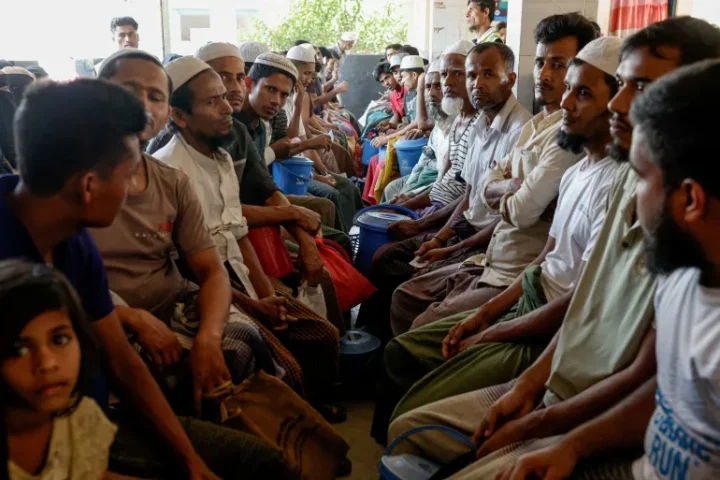India’s lunar lander and rover have been put to bed as the Sun begins to set on the Moon, the country’s space research agency Isro has said.
They have been put in “sleep mode” and “will fall asleep next to each other once the solar power is depleted and the battery is drained”, it said.
Isro added that it hoped they would reawaken “around 22 September” when the next lunar day starts.
The lander and rover need sunlight to charge their batteries and function.
The Vikram lander – carrying a rover called Pragyaan in its belly – touched down on the Moon’s little-explored south pole on 23 August.
With that India became the first country to land near the lunar south pole. It also joined an elite club of countries to achieve a soft landing on the Moon, after the US, the former Soviet Union and China.
The Indian space agency has been providing regular updates on the lander and the rover’s movements and findings and sharing images taken by them.
In its latest update on Monday morning, Isro said Vikram had “soft-landed on the Moon again!”
After the Chandrayaan-3′ mission’s lander was “commanded to fire its engines, it rose up by about 40cm [16 inches] and landed at a distance of 30-40cm”, Isro said.
This “successful hop experiment” means the spacecraft could be used in future to bring samples back to the Earth or for human missions, it added.
Chandrayaan-3’s landing had been carefully planned to coincide with the start of a lunar day, which equals a little over four weeks on Earth. Isro had said this would allow the lander and the rover 14 days of sunlight to charge their batteries and work. It has now said that both have completed all their assignments.
Initially, Isro had said that once night fell – which also equals two weeks on Earth – the lander and the rover would stop working. But scientists say it is possible that they will come back to life when the next lunar day starts. For instance, China’s Chang’e4 lander and Yutu2 rover woke up several times with the sunrise.
So, hoping that Vikram and Pragyaan would also wake up when a new day breaks, Isro officials have prepared them for the night – their batteries have been fully charged, all their scientific instruments have been turned off and they are now “safely parked in sleep mode”.
Former Isro chief Kiran Kumar told the BBC that nightfall may still be a couple of days away, but the lander and – especially – the rover had to be readied now.
“Sunlight falls on a particular spot on the surface depending on its location, and the Sun goes down in orientation near the pole sooner, which means that the lander and the rover would not get sunlight for long.”
The rover, he explained, may be at a particular disadvantage as it is small and can be stuck in the shadows in the south pole region which has lots of craters with elevated rims that can block out sunlight. And the evening Sun going down can lengthen these shadows further, which can put the rover in the dark region.
“The lander and the rover have been prepped for when the day breaks again. So they are parked in the right spot and with right solar orientation. When the Sun rises next, the solar panels will face in its direction so they are able to absorb radiation and generate power and feed the system to bring it back to life” he said.
A successful awakening, however, is not a given, Mr Kumar says.
“We are hopeful, but you can never tell. Their batteries are not designed to operate or for storage in the temperatures that can go down to -200C to -250C.”
Isro has also tried to temper expectations.
“The battery is fully charged. The solar panel is oriented to receive the light at the next sunrise. The receiver is kept on. Hoping for a successful awakening for another set of assignments!” it posted on X, formerly called Twitter.






